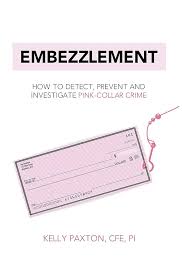Understanding Embezzlement: Current Trends and Implications

Introduction
Embezzlement, the act of misappropriating funds for personal gain, has become an increasingly pressing issue in both private and public sectors. Its impact extends beyond financial loss, affecting employee morale and company reputation. According to a recent study by the Association of Certified Fraud Examiners, organizations lose an estimated 5% of their revenue each year due to fraud, with embezzlement being a significant contributor. Understanding the dynamics of embezzlement is crucial not only for organizations but also for individuals who may find themselves in positions of trust.
Current Trends in Embezzlement Cases
Recent cases in Canada highlight the severe implications of embezzlement. For example, in September 2023, an accountant from a prominent construction firm was charged after an internal audit revealed over $1 million had been siphoned into personal accounts over seven years. This case made headlines not only for the amount involved but also for the breach of trust within a well-established company.
Furthermore, the Canadian Anti-Fraud Centre has reported a 30% increase in embezzlement-related cases over the past year, particularly among small businesses. Many small business owners are unaware of the risks and often lack the controls necessary to deter embezzlement.
Prevention Strategies
To mitigate the risks associated with embezzlement, organizations are encouraged to implement strong internal controls. These may include separation of duties where no single employee has control over all aspects of a financial transaction, regular audits, and utilizing software solutions that track financial activity transparently. Training employees about the signs of fraud and encouraging a culture of accountability is also essential.
Additionally, fostering an open environment where employees feel comfortable reporting suspicious activity can significantly reduce incidents of embezzlement. Companies should establish clear channels for concerns and ensure employees feel safe to voice their worries without fear of retaliation.
Conclusion
Embezzlement poses substantial risks that can cripple organizations and erode trust within teams. As highlighted by the rising number of reported cases, it is imperative for companies to recognize the importance of preventative measures. By cultivating a culture of transparency, accountability, and vigilance, organizations can better protect themselves against the financial and reputational damages caused by embezzlement. The future will likely demand more stringent regulations and stricter compliance measures, making it increasingly important for both employers and employees to remain informed about their responsibilities and the potential risk factors associated with financial management.









